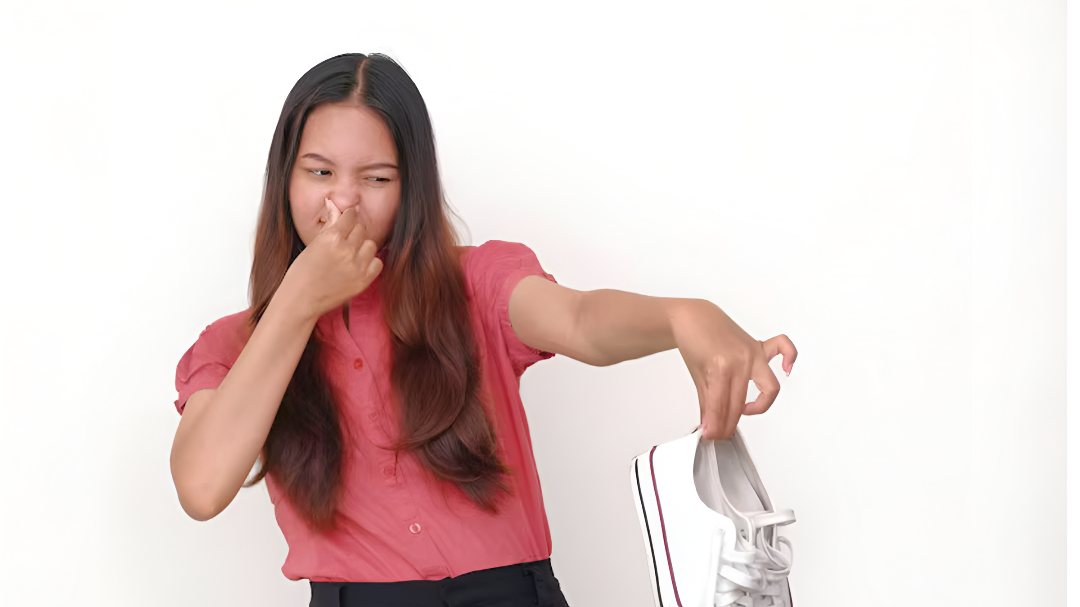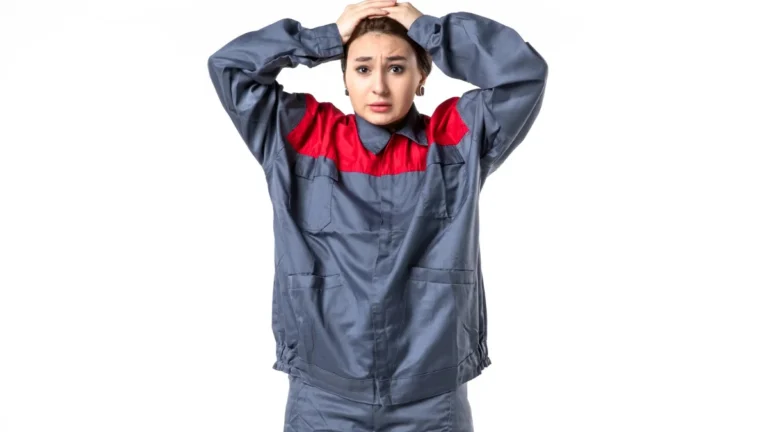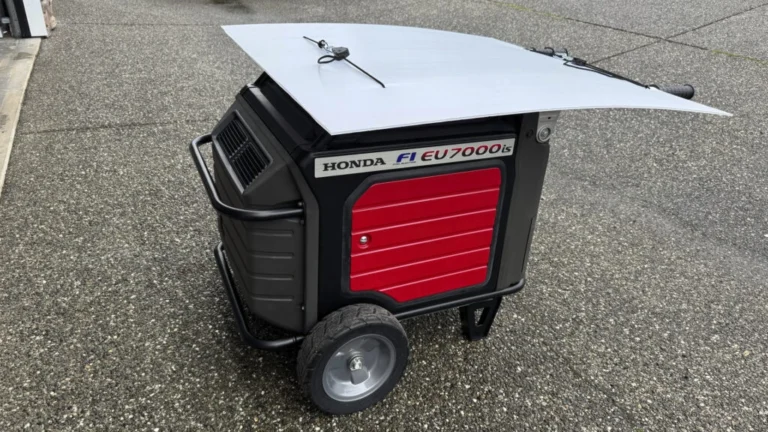Are your shoes the cause of that dirty smell?
You’re not just alone. Shoes are among the first items that deteriorate during the rainy season. They keep moisture and absorb rains, and before you realize it, they begin to grow mold or smell bad. Nothing is prone from the damp madness of the rainy season, not even your favorite sneakers, work shoes, or children’s school shoes.
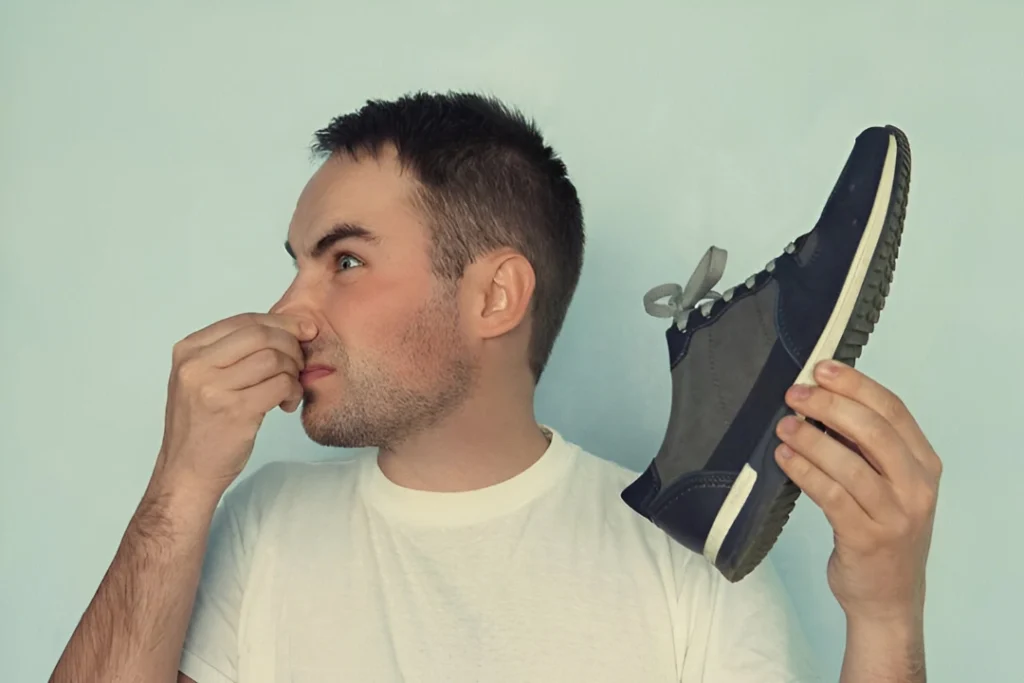
Shoes are a great place for bacteria and fungi to grow because of the combination of wetness, not enough ventilation, and dark storage. The outcome? shoes that become harmful to wear in addition to smelling bad. Many of us silently cope with issues like itching, mold spots that are visible, and bad smells.
The good news is that you can repair it without the need for costly devices or complex treatments. Your shoes may stay mold-free, dry, and fresh throughout the rainy season with a few simple storage tips, natural cures, and wise practices.
Even if your shoes get wet frequently, I’ll walk you through easy techniques and how to stop mold and damp smell in shoes during monsoon in this guide to keep algae and damp odors from destroying them. This rainy season, let’s make sure your shoes stay stylish rather than ugly.
- Why Shoes Smell During Monsoon?
- Best habits for preventing moisture to grow
- What are the Best Effective Storage & Moisture Absorbents for shoes during monsoon?
- How to Clean and Deodorize Moldy Shoes During Monsoon?
- Best Ways to Dry Wet Shoes Safely During Monsoon
- Long-Term Protection & Preventive Care for Shoes During Monsoon
- Frequently Asked Questions (FAQs)
Why Shoes Smell During Monsoon?
Have you ever asked why, even after a short period of use, your shoes smell bad during the rainy season? It all comes down to the three most ideal circumstances for the growth of fungus and bacteria: invisibility, warmth, and moisture. And all three are powered by the monsoon.
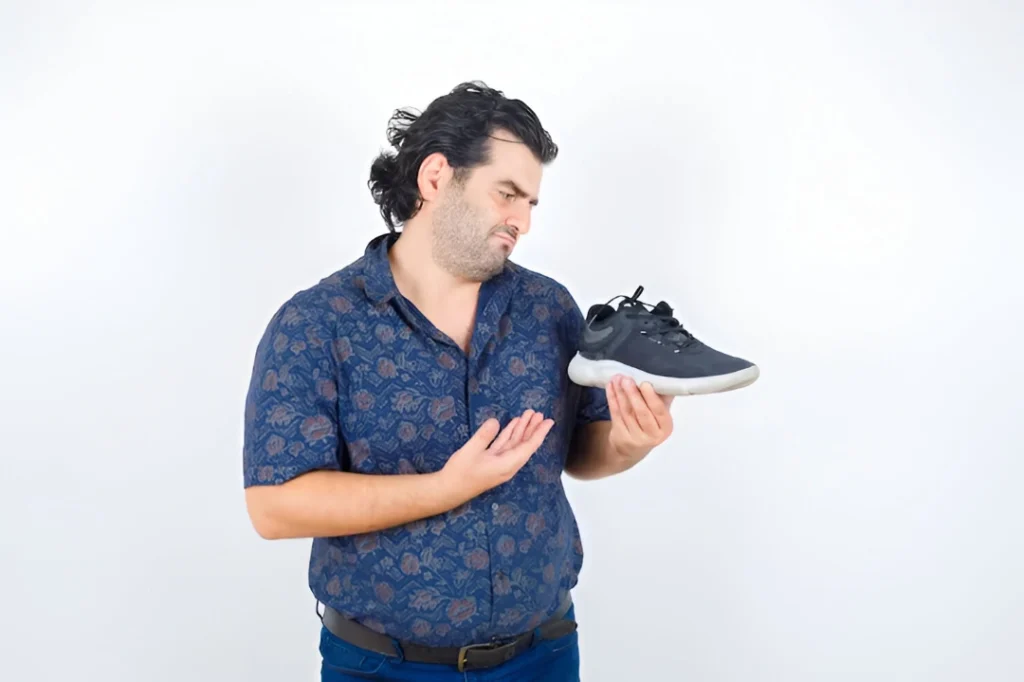
1. A breeding area is created by absorbed wetness
Rainwater gets into your shoes through tiny gaps and fabric pores, not just the outside. The insole and inner lining typically remain wet even when the outside appears dry. This absorbed moisture provides the ideal environment for fungi and bacteria that cause smells when they grow.
2. Sweat + Rain = Double Trouble
When you wear shoes in humid conditions, your feet sweat more. Your shoes will move from being “just wet” to being “smelly and mushy” quickly if you add in some rain and little airflow. The same pair will never have an opportunity to completely dry out if you wear them every day.
3. Lack of Airflow in Storage
Do you keep wet or even wet shoes below beds, in dark storage spaces, or within closed racks? A bad idea. Mold grows on the wetness that collects when there is neither light or air flow. Unknowingly, many people “store the smell” by putting their shoes in small locations before they have had time to fully dry.
4. Certain Shoe Materials Absorb More Water
The worst offenders are uncoated leather, canvas, and mesh. Compared to synthetic or rubber-based shoes, these materials absorb water more readily and dry far more slowly. They begin to smell after a day or two if they have not been properly cleaned and dried.
Best habits for preventing moisture to grow
What you do right after wearing your shoes is important in keeping them fresh if they are continuously getting wet from sweating rain, or humid air. The following easy practices can have a significant impact:
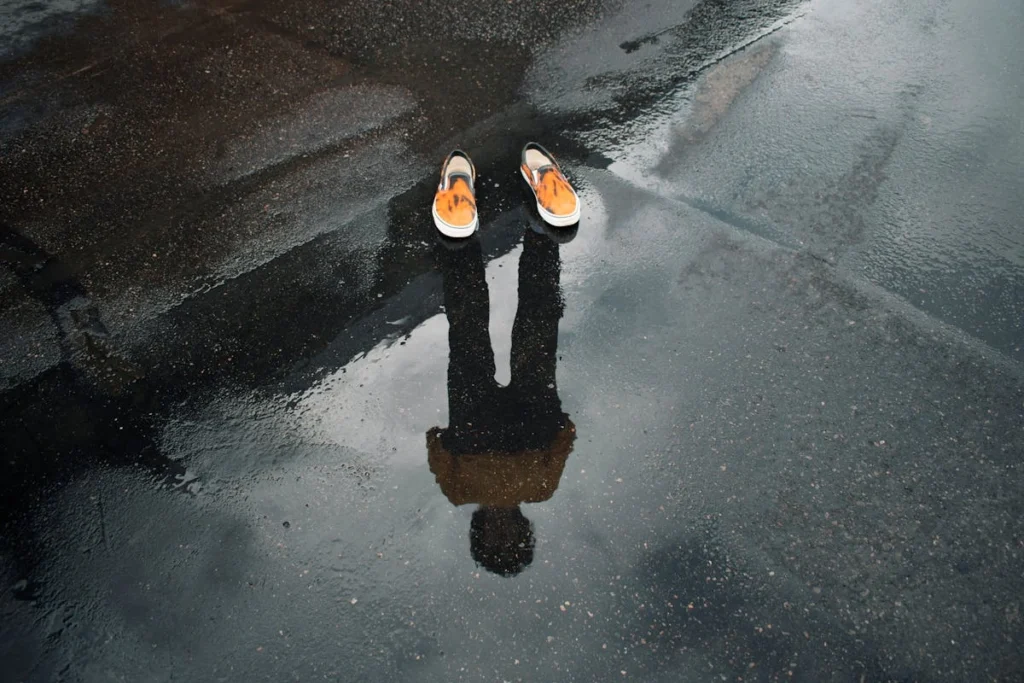
1. Remove Insoles and Laces Every Evening
Don’t simply throw your shoes in the corner when you come home. Take a few seconds releasing the laces and taking out the insoles. This helps faster drying by allowing air to reach the interior moist areas. Leaving them in allows moisture to be absorbed and smell to form.
2. Rotate Your Shoes – Don’t Wear the Same Pair Daily
One pair of shoes will never have time to dry out properly if you wear them every day. Instead, rotate at least two pairs; on lighter days, even simple sandals or flip-flops might let your main pair recover.
3. Use absorbent or quick-drying socks alternatively
Cotton socks absorb moisture like a sponge, although their silky texture. Use quick-dry or synthetic socks during the rainy season. They limit the amount of moisture that gets into your shoes and keep your feet dry.
4. Let Your Shoes Breathe, Even If They’re not Wet
Don’t put your shoes back under the bed or in a locked cupboard after the day is over; instead, put them somewhere open and airy. Before it becomes a smelly disorder, let the winds blow to naturally dry any moisture.
What are the Best Effective Storage & Moisture Absorbents for shoes during monsoon?
If shoes are maintained badly, even the cleanest ones can start to smell or grow microbial growth. Your storage arrangement is just as important during the rainy season as your cleaning schedule. Here’s how to maintain your shoes mold-free and fresh even in humid conditions.

1. Always Store Shoes in a Ventilated Space
Shoes should not be kept below beds or in cupboards that are securely locked, especially if they are even slightly moist. Rather, pick a light-filled corner beside a window or in an open shoe rack. If you have no other choice but to store things in cabinets, keep the doors slightly open and have a small fan or vent close by during the rains.
2. Make use of moisture-absorbing sachets or silica gel packs
Those little packets you see inside fresh shoe boxes are used for purposes other than shipping. Packs of activated charcoal or silica gel work well for absorbing moisture. To avoid bacteria and odor, put one or two in each shoe or store them inside your rack.
3. Store Shoes with folded Newspaper
Among the most affordable yet effective tips! Newspaper helps the shoe keep its shape, absorbs excess moisture, and even reduces smells. If the shoes are really wet, change the paper daily.
4. Make a DIY Moisture Bag Using Kitty Litter or Rice
Tie a knot on an old sock after packing it with without smell cat litter or raw rice. Put it in your shoe cabinet or shoes. These simple natural materials absorb humidity in the same way as costly dehumidifiers.
5. Avoid Plastic Shoe Covers or Closed Bags for Storage
You should never keep your shoes in closed plastic boxes or bags unless they are entirely dry. This keeps moisture in and almost makes sure the growth of bacteria. During the monsoon, always give priority to open storage solutions.
Your shoes will remain dry, fresh, and far away from fungal area if you store them in the proper conditions and have a few handy absorbents.
How to Clean and Deodorize Moldy Shoes During Monsoon?
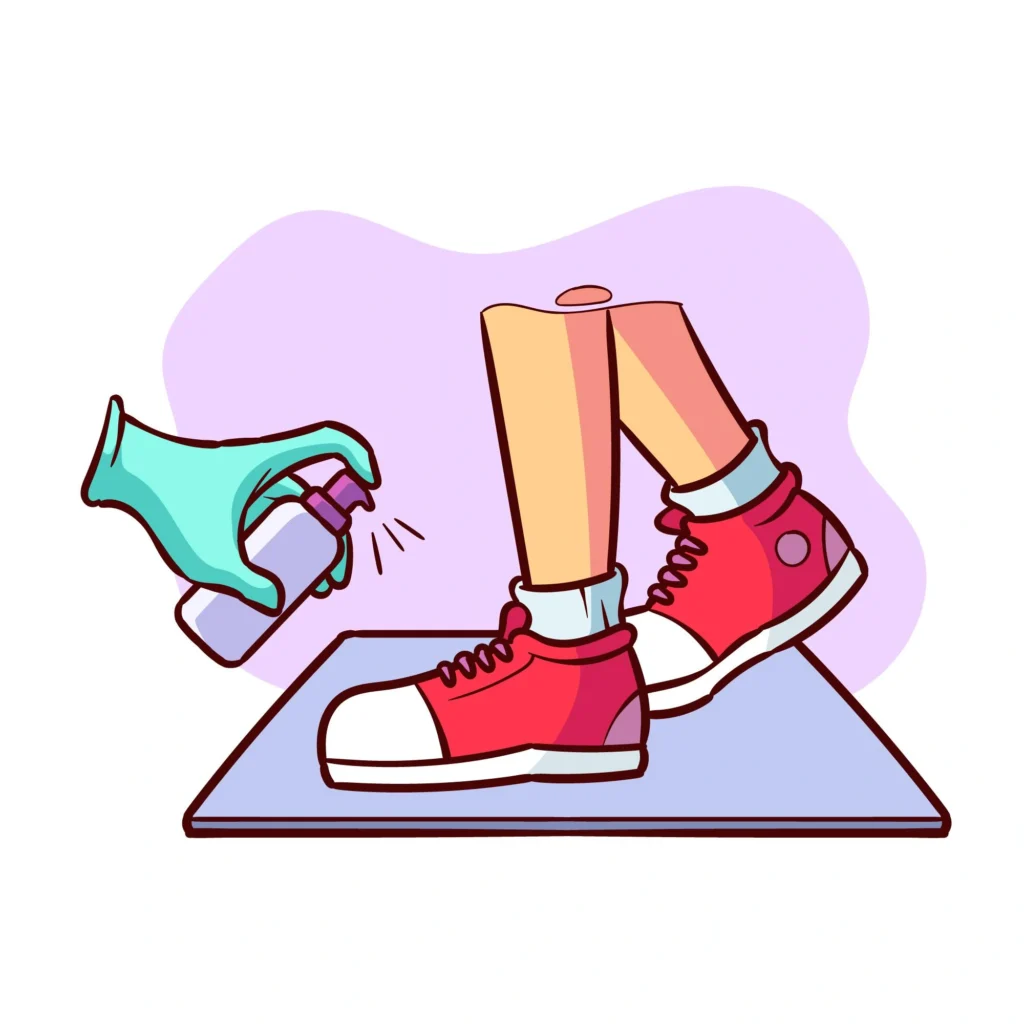
Shoes can still become smelly even with proper care and dry storage, particularly if they become wet. Cleaning them properly is necessary to preventing germs or fungus from taking control.
1. Use White Vinegar to Kill Mold and Bacteria
In a spray bottle, combine equal parts water and white vinegar. In a comfortable sunny place, spray lightly the inside of your shoes and allow them to air dry. Due to its natural antifungal properties, vinegar aids in getting rid of smells.
2. For smell control, apply baking soda overnight
Baking soda is amazing for bad-smelling shoes. At night, simply place a tablespoon into each shoe. Shake it out in the morning. It keeps your shoes fresh by absorbing moisture and stink.
If you don’t want the powder to become loose in your shoes, you may alternatively place baking soda in a coffee filter or a tiny fabric bag.
3. Add Essential Oils or Dryer Sheets for a Fresh Scent
For natural smell management, place a few drops of tea tree, lavender, or cedar oil inside your shoes. Your shoes will smell great after using these antibacterial oils. As an alternative, place a dryer sheet inside each shoe once it has dried; this can help with minor wetness and provide smell.
4. Use a soap and vinegar mixture to scrub wet areas
Mold is present if you see any green, black, or white patches on the inside or outside of your shoes. Don’t ignore it. Scrub the areas carefully with a towel or an old toothbrush dipped in a solution of dish soap and vinegar and warm water. Rinse softly and dry it completely.
5. Clean Insoles Separately
Sweat and bacteria are most effectively contained by insoles. Regularly remove them and wash them with water and light soap. Avoid placing them in the sun or heat and instead dry them flat in the shade.
It’s not necessary to deep clean your shoes every day to keep them mold-free; regular, light maintaining with the correct products may keep musky smells at home.
Best Ways to Dry Wet Shoes Safely During Monsoon
Whether it’s from walking in water, getting stuck in an unexpected deluge, or facing the constant humidity, rainy weather usually ends in your shoes becoming wet. However, improper drying can sometimes cause more harm than good. It may result in misshaping, cracking, or increase of the smell.
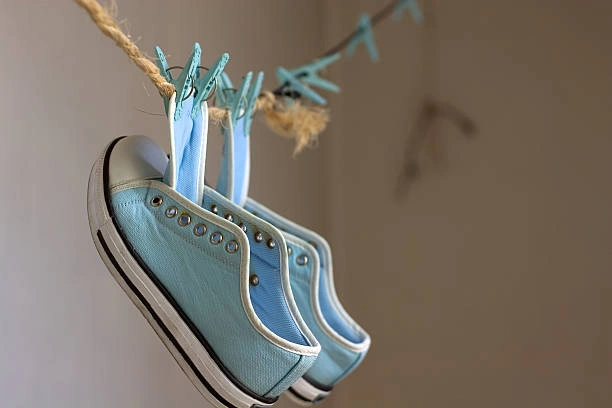
Here’s how to properly dry your shoes without causing any harm to the material.
1. Use Newspaper to Absorb Moisture
Put a folded sheet of old newspaper into your shoes. The paper helps your shoes maintain their shape while taking away the moisture from inside. If your shoes were completely wet, change the paper after a few hours.
2. Dry in a Ventilated, Covered Area
Shoes may crack soles, ruin adhesives, and fade colors if they are placed near a heater or in direct sunlight. Rather, put them somewhere cool, shaded, and well-ventilated. A nearby standing fan does wonders.
3. Use a Shoe Dryer or Boot Dryer (If You Have One)
Purchasing an electric shoe dryer is a game-changer if you live in an area that gets regular rain. These gadgets dry your shoes equally in a few of hours by putting warm not hot air inside of them.
4. Swap Wet Insoles with a Dry Pair
You should remove and dry your insoles separately if they are removable. After the outer body is dry, put your backup pair into your shoes. As your primary insoles continue to dry, this maintains everything comfortable and fresh.
5. Avoid Plastic Bags or Closed Boxes
Wet shoes should never be kept in zip-lock bags or airtight containers. This absorbs moisture and promotes the creation of mold. Let your shoes breathe at all times.
Long-Term Protection & Preventive Care for Shoes During Monsoon
Daily maintenance is important, but you should think about the long term if you want your shoes to make it through the full monsoon season without breaking down or smelling bad. By taking these precautions, you can extend the life of your shoes, limit the need for repeated washings, and protect them from continuous moisture and rain.
1. Apply a Waterproof Spray or Wax Coating
Rainwater flows off your shoes rather than soaking in when you apply a waterproofing spray or wax. Select items according to the material of your shoes (leather, suede sneakers, canvas, etc.). For optimal effects, reapply every 2 to 3 weeks during the monsoon.
2. Use Shoe Trees for Formal or Leather Shoes
Shoe trees, particularly cedar ones, absorb moisture from the inside of your shoes and help keep them in shape. Cracks, folds, and that uncomfortable “soggy shoe” texture can be avoided this way.
3. Put antibacterial insoles in place of worn-out ones
Over time, germs and perspiration get accumulated in old insoles. In their place, use antimicrobial insoles or activated charcoal, which reduce odor and carry away moisture, making them great for humid and wet conditions.
4. Schedule a Weekly Refresh Routine
Even if you haven’t worn your shoes in a while, set a weekly reminder to clean and check them. you should replace absorbents such as silica packs or baking soda, let them air out, and look for early mold growth.
5. Keep a Backup Pair Ready for Rotation
You won’t have to wear the same wet shoes another day if you have an additional pair. While using one pair, let the other pair dry fully. This little action significantly lowers the chances of fungal growth, wear, and smell.
The steps above may need a bit more time, but they will help you maintain your shoe collection durable and fresh season after season by preventing many replacements, unexpected costs, and damaged favorites.
Frequently Asked Questions (FAQs)
How do I stop my shoes from smelling after they get wet in the rain?
First, use a fan or newspaper to completely dry them. After that, add baking soda to absorb smells for the entire night. Another option is to spray a vinegar-water mixture inside and allow it to dry; this removes the bacteria that is creating the smell.
Are there any sprays to prevent mold or water damage?
Yes! a protective coating is added by shoe waterproofing sprays, such as those with silicone or wax-based mixtures. During the monsoon, spray them once every two to three weeks to keep bacteria and water out.
What’s the best way to remove mold from leather shoes?
You can use a soft cloth, gently wipe with a vinegar + water solution. Avoid vigorous cleaning. After cleaning, use leather conditioner and place the shoes in a window to air dry.

